Unidentified Milk-vetch
possibly Astragalus conjunctus var. conjunctus (Synonym: A. reventus var. conjunctus) or Astragalus reventus (Synonym: A. reventus var. reventus)
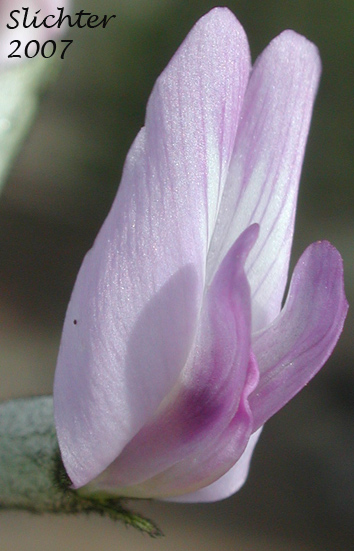 -----
----- 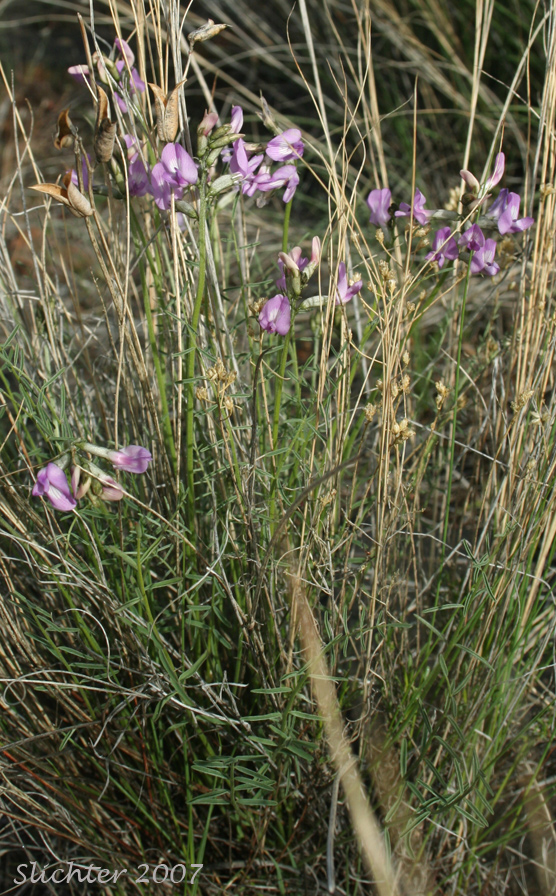 -----
----- 
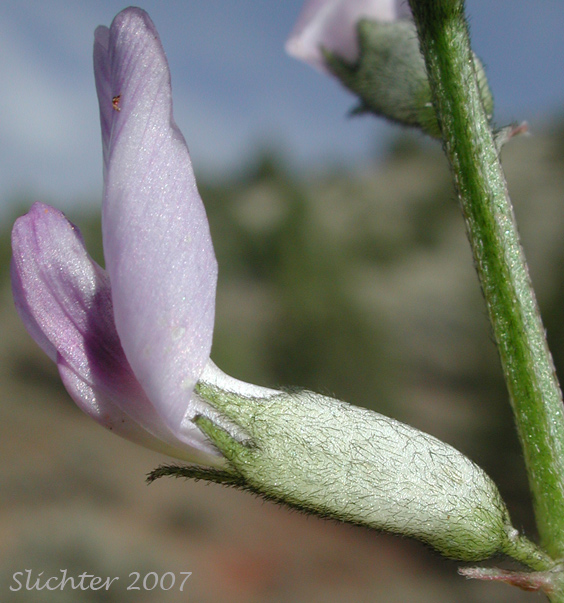 -----
----- 
The photos above show close-up views of an unidentified milk-vetch as seen south of the John Day River along South Twickenham Road in north-central Oregon....................April 8, 2007. Note the long calyx tube (at least 2 times as long as wide), the narrow leaflets which number less than 23. and the long banner and wing petals. The flowers at this location seem to be slightly smaller than those of Idaho milk-vetch (Astragalus conjunctus var. conjunctus) seen at other Oregon locations. (Click each photo to see a larger version.)
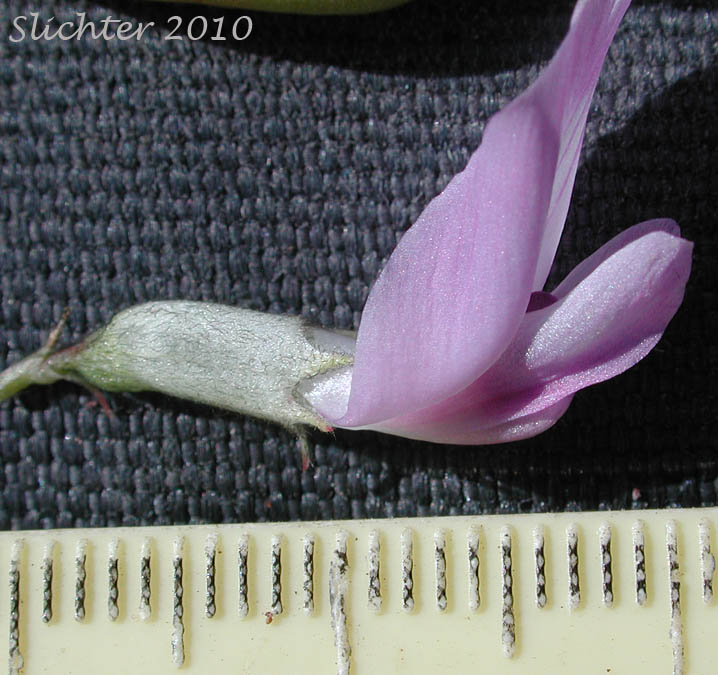 -
- 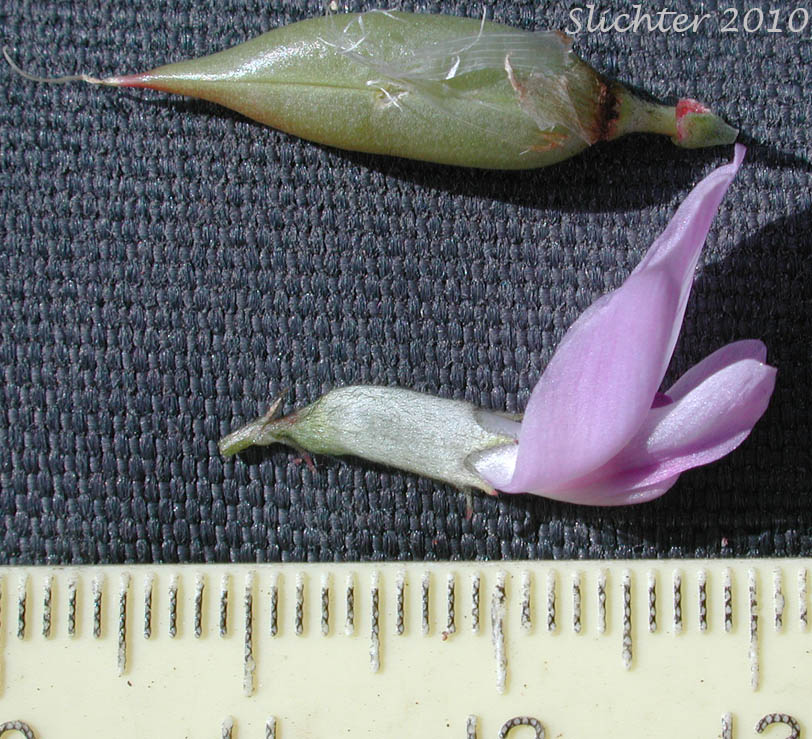 -
- 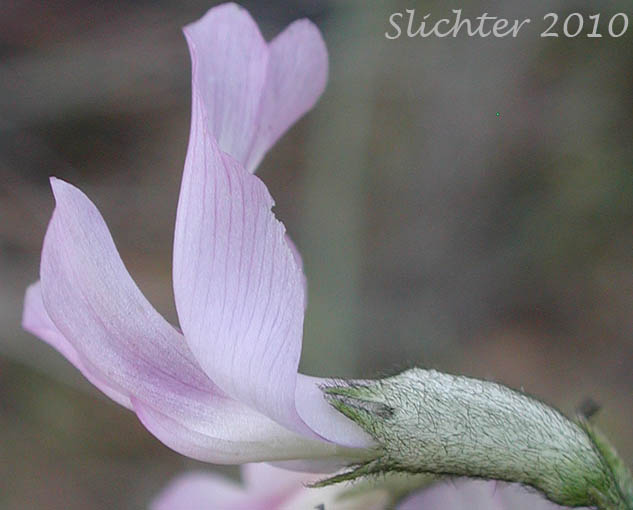
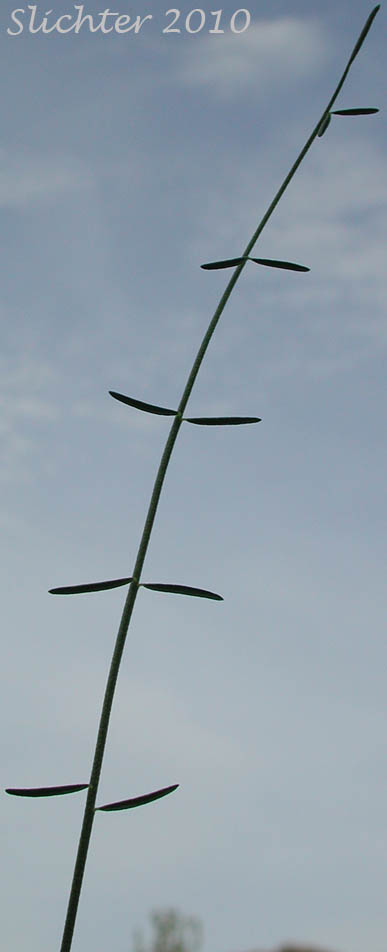 -
-  -
-  -
- 
Additional close-up views of this unidentified milk-vetch as seen amongst bunchgrasses at Camp Hancock about 2 miles east of Clarno, OR................May 15, 2010. Note again the long, narrow leaflets which in this individual number about 11, the glabrous dorsal-ventrally flattened pod which is held nearly erect on the stem and long wing and banner petals on the flowers. A return to one of the sites where this species is seen is necessary to gain evidence of the type of stipules found at the base of each of the lower stem leaflets to help identify the plants.
Paul Slichter
 -----
-----  -----
----- 